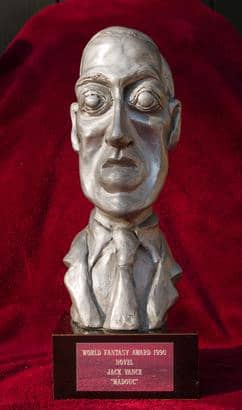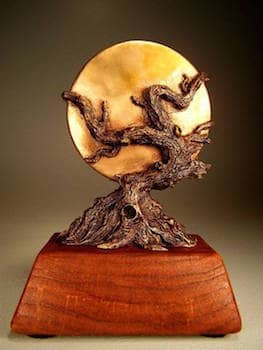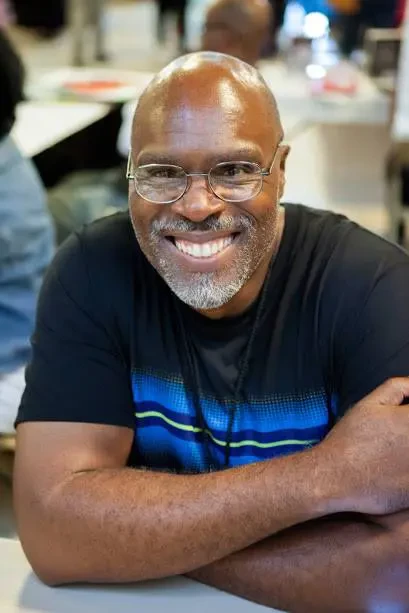
Because castles made of sand fall into the sea. Eventually.
Jimi Hendrix
There will always be those who build without looking closely at the construction materials used because, like any family business, if it was good enough for granddad, it’s good enough for grandson. But can we say, “If it ain’t broke, don’t fix it” if what’s built was constructed of things that can’t bear any real weight and are guaranteed to fall?
Monuments, unmoving metal and stone guardians of our values, can be surprisingly flimsy, particularly in their attempts to avoid the brittle issues that come with bestowing immortality to unpleasant people or things. Confederate monuments, Columbus, and a plethora of statues of men whom history has not been kind to are fixtures in nearly every locale of our lives.
Fortunately, we live in prime times for tearing down monuments, particularly in the U.S., where demographic shifts are making an unwilling country reconsider its guardians, mythologies, and power structures. Monuments, big and small, are toppling. Nothing—not the builders or the social materials they used—has been granted immunity from scrutiny, not even in what sometimes feels like the bubble universes of fantasy and science fiction.
Until only recently, the World Fantasy Award, both the winner’s trophy and the nomination pins, were a bust of the author H.P. Lovecraft. Howard Phillips Lovecraft, someone who clearly had zero compunctions against being the worst he could be under the most specious of excuses, is well-known for pointedly toxic, virulent racism. In 2016 the H.P. Lovecraft iconography associated with the award, after years of legitimate questions raised about its propriety by writers whom Lovecraft would have howled against, was finally abandoned and changed to a gnarled tree set against a full moon. Authors such as Daniel José Older, Nnedi Okorafor, and Sofia Samatar gave voice to the disjointed reality of representing world fantasy with a person whose regard for unity and diversity were on the low end of fantastic.
More recently, The John W. Campbell Award for New Writers became the Astounding Award for New Writers. The impetus for change came after Jeannette Ng’s acceptance speech as the winner of the 2019 John W. Campbell New Writer award excoriated Campbell’s Golden Age reputation. Rather than prop up a personality that had positioned itself as the arbiter and gatekeeper of the sci-fi universe, Ng chose to speak truth to power: the idolized version of Campbell accepted as “canon” in the sci-fi field was made of sand, not iron or stone. This truth was hard to hear for those who knew him personally. Sounded discordant and clanging. Breaking things down to rebuild often is, and there are those who will always decry changes from the status quo as reactionary or pacifying, as if causing offense is inherently a gold star quality. “We built this!” they’ll shout. “This is ours!” Some members of the genre community are so vehemently against changes we have to wonder what, exactly, displeases them so? The renamed awards still exist as awards, so they can’t be upset about their new works lacking the opportunity to garner merits. And the awards have nothing to do with their family name, so familial legacy is not a reason for protest.
But knowing you’ve always had an unspoken privilege, that you were part of a rather icky clique, or perhaps the things you’ve built or held up as exemplars wouldn’t quite pass close inspection—those are reasons to howl. In a twisted form of perceived erasure, folks will lament the worst parts of themselves—the worst parts of their history—no longer being celebrated. No longer granted immortality via monuments big and small. What an odd form of misdirected aspiration, one leading to worshipping toxic personalities attached to awards and ideas which they hope someday might raise the velvet rope, allowing them access and validation. This misdirection lends itself to a smugness that sneers at innovation and a spiteful attitude toward inclusion; it breeds talk of identity politics as the reasons behind the accomplishments of those the status quo exists to keep outside the rope.
It leads to telling those who have been forcefully excluded to be quiet, be invisible, be grateful we, at times, allow any of you in.
To those thinking of themselves as part of the quo’s canon, the monuments to that acidic past must not be erased. These are the minds that will tell us Medusa made heroes, rather than victims, of the men who sought her out in her exiled solitude and planned to kill her. Gaslighting 101: turn the attacker into the victim. Thus Lovecraft is fixed in time as the oft put-upon champion of the imaginative macabre, no matter that his attitudes and words meant to crush others. Thus Campbell’s fascistic leanings and blunt machinations to morph himself into someone who contributed much to science fiction soften him from being the Edison he was to how many unknown Teslas of the time.
The worst of our qualities shouldn’t be cherished just in case we, ourselves, turn out to be the worst. This glorification of the past becomes the highly effective tool it pretends not to be—“for,” says such glorification, “we are celebrating accomplishments and merits; who can speak naught but lauds for that?”—it becomes a tool for silencing the present, even to the point of stifling creativity in the majority group it supports. Newer white writers feel they must enter the field wearing the floppy skins of others; marginalized writers get branded unrelatable or non-existent.
To this day, the halls of genre echo with “(insert non-white demographic here) don’t write (and therefore no one needs to read them) fantasy or sci-fi.”
Marginalized folks know a thing or two about actual erasure.
2020’s Hugo ceremony was full of glorification. Not a wisp of acknowledgment of the why of the Campbell Award’s name change, yet a flurry of mentions of Campbell himself, having the effect of painting Campbell as a benefactor to all of SFF when clearly all meant white males. The imaginations that became creative canon skipped anyone outside a highly narrow demographic to the point of creating that egregious historical magic of “There weren’t any.”
But there was. There always was. We know that now and we’re looking at the past accordingly, otherwise you would think there had never been tales of people from beyond the stars in the history of the world until (insert white male here) Discovered Science Fiction … unless you had read of the Dogon of West Africa, or the works of Martin Delany, Sutton Griggs, or others of the early 19th century. You would think women had absolutely no dealings with fanciful trappings wrapped around philosophical and political investigations, unless you chanced upon Pauline Hopkins, Mary Shelley, Margaret Cavendish, Andre Alice Norton, and more. You would infer that science fiction, and its close cousin fantasy, sprang solely from the sown teeth of tall, European, albino dragons.
You might not even know that, in the history of the most coveted award in sci-fi, only one person has ever won it three years in a row: N. K. Jemisin, a Black woman.
What restrictive views of science and fiction.
And, yes, she’s that frikking good.
The quo surrounds history’s African dragons, Chinese dragons, Japanese, Abya Yala—all the dragons and technological wonders of a world made of colors, genders, and sensibilities—within an enclosure of unscalable monuments to the quo—to oneself—monuments where marginalized dragons find themselves peering out from the shadows hoping to catch a glimpse of the builders and their works, but find they are still relegated to silence and forced-invisibility. In ignorance, or maybe fear, or perhaps malice, you would make sure that any noises of discontent or inequity within the encircled would not be heard, by dint of the thunderous, resounding claim of the builders stoutly declaring, “Community!”
Or, if heard, would be summarily declared nothing but noise.
Builders of such monuments always find it unfortunate that the present has a voice and it, to paraphrase, must scream.
I wonder if people hear these notions: to name an award World but actively limit its scope to one country or a precious few is to tarnish the accomplishments of those winning it; to name an award after a person demonstrably unworthy of such immortality shackles winners of that award who belong to the groups the named spoke ill toward to that person’s lasting ugliness; to create monuments to people who knowingly, willingly, and publicly did/do harm is not honor but aggrandizement at the least, focused insensitivity at base, and intentional violence at worst.
Maybe, in the case of science fiction and fantasy, building in our own small ways, we should no longer name awards after people. Instead, levy our vast imaginative powers to construct appellations and designs of wonderful monuments that genuinely speak to the aspirational spirit of creativity. The whole point of gathering around a Hugo, Nebula, or twelve hundred other similar celebrations is to honor creative vision mixed with, hopefully, a determination to interrogate the present into revealing what it knows about the future.
Would it hurt to think less of protecting stone giants, and more of moving them aside to allow sunlight to shine through? It’s truly possible to honor the past without actively shouting down the present. HBO’s Lovecraft Country clearly shows this. Lovecraft crafted creepy crawlies. People love creepy crawlies. We didn’t, however, need an award in his name. Acknowledging history’s actions against the marginalized is a hard one for a lot of people in the SFF field. Even the entire concept of marginalization is inherently violent. Let’s state things simply to address this difficulty: folks don’t mind standing before monuments, studying the mechanics, or acknowledging the construction, but when the aim is to keep people in the shadow of the monument and not the light of imagination, expect to catch hands.
Attitudes toward others come out in what we assign importance. If you think women exist to serve and prop you up, you’re not going to see women’s stories as important. If you think minorities are inherently suborned to your modes of thought, you’re not going to be supportive, even if the only support asked is that you stop intentionally getting in the way. What you’re going to do with such attitudes is build spurious monuments to yourself. The First Woman award goes to you for being so magnanimous as to allow a woman access; the First Black is a ribbon that sits proudly on your chest to show how progressive you’ve become.
Awards and monuments become papier-mâché or sand.
Gospel truth: nothing in the past is meant to keep the present from creating the future. The past is not to be worshipped, with criticisms of it blithely washed away. The past contextualizes the present; the present evaluates the past; consciousness emerges via this dual action. Every monument is built with something of its past ingrained into it. This leaves our duty as writers, publishers, editors, agents—the entire food chain of the conjuring arts—to ensure we leave monuments for the future—better yet, testaments to imaginative fortitude—constructed of stronger stuff than spite or fear. Spite and fear are the bulwarks of exclusivity, the hallmarks of petty, and the bane of art as the wondrously linking tool it is meant to be. Shoddy materials.
Welcome the reevaluation happening in the industry. People tethered to the past are scared because untenable monuments, like sandcastles, inevitably topple, and the waves of change will only get wider, with ever more powerful tides. Building to include, building to acknowledge, and keeping faith in a willingness to explore are sturdy materials toward crafting monuments, awards, and even individual works. Works that last. Build with lasting materials, ones that pass careful, considered inspection and none of us will need to worry quite as much about future monuments tumbling, crumbling, and dissolving into the deeper sea.














